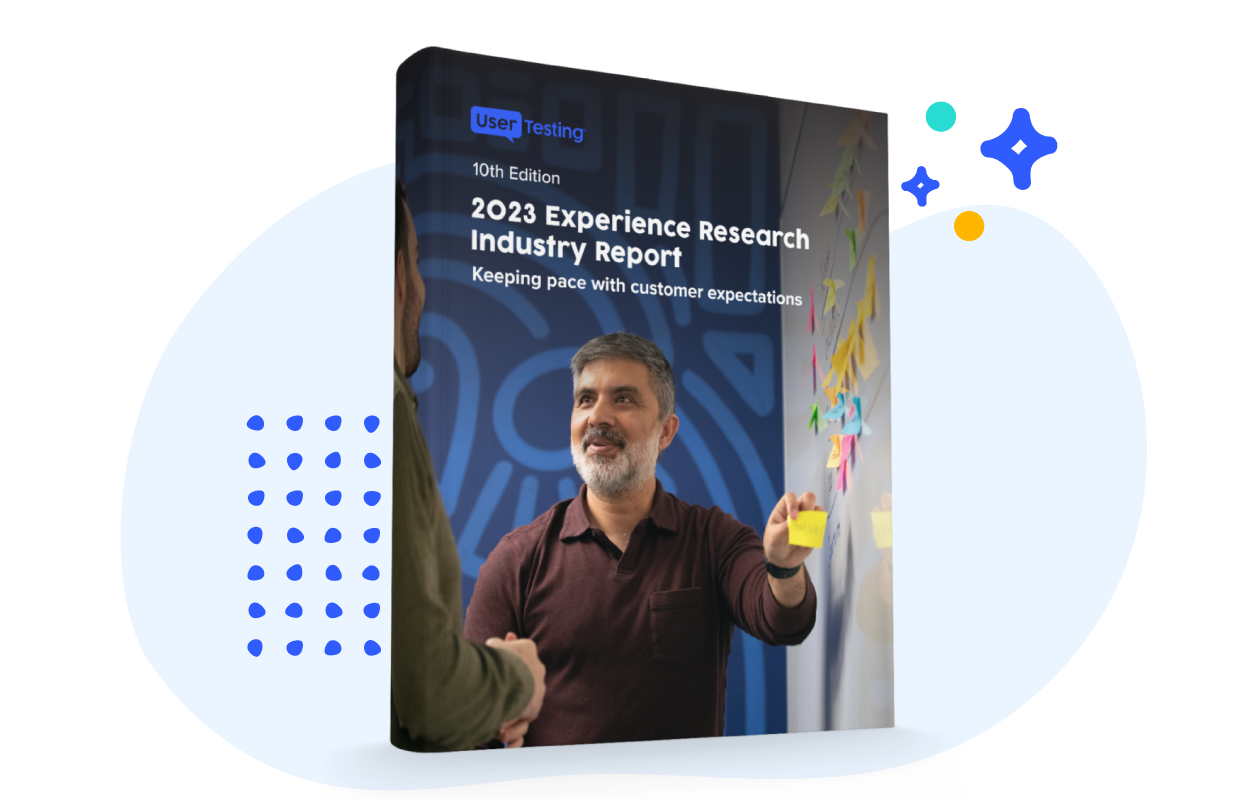
How the Double Diamond can help align product, design and tech teams

What is the Double Diamond?
The Double Diamond (DD) has been around since 2005 and was first endorsed by the UK Design Council to explain a general design process. It is agnostic of industry and has been used in fashion, product design, UX etc.
The DD focuses on two different, but connected, principles: Definition and Execution.
- Definition focuses on making sure what you’re about to build is worth doing, that it meets customer needs and can fit in with the rest of the product.
- Execution is the iterative prototyping, testing and improvement cycle that finishes with a built product.
Once seen as a bit old fashioned for design, lately it’s been experiencing a renaissance when it comes to communicating a vision. The DD was also repurposed recently in a book by Peter Merholz and Kristin Skinner, Org Design for Design Orgs, published 2016.
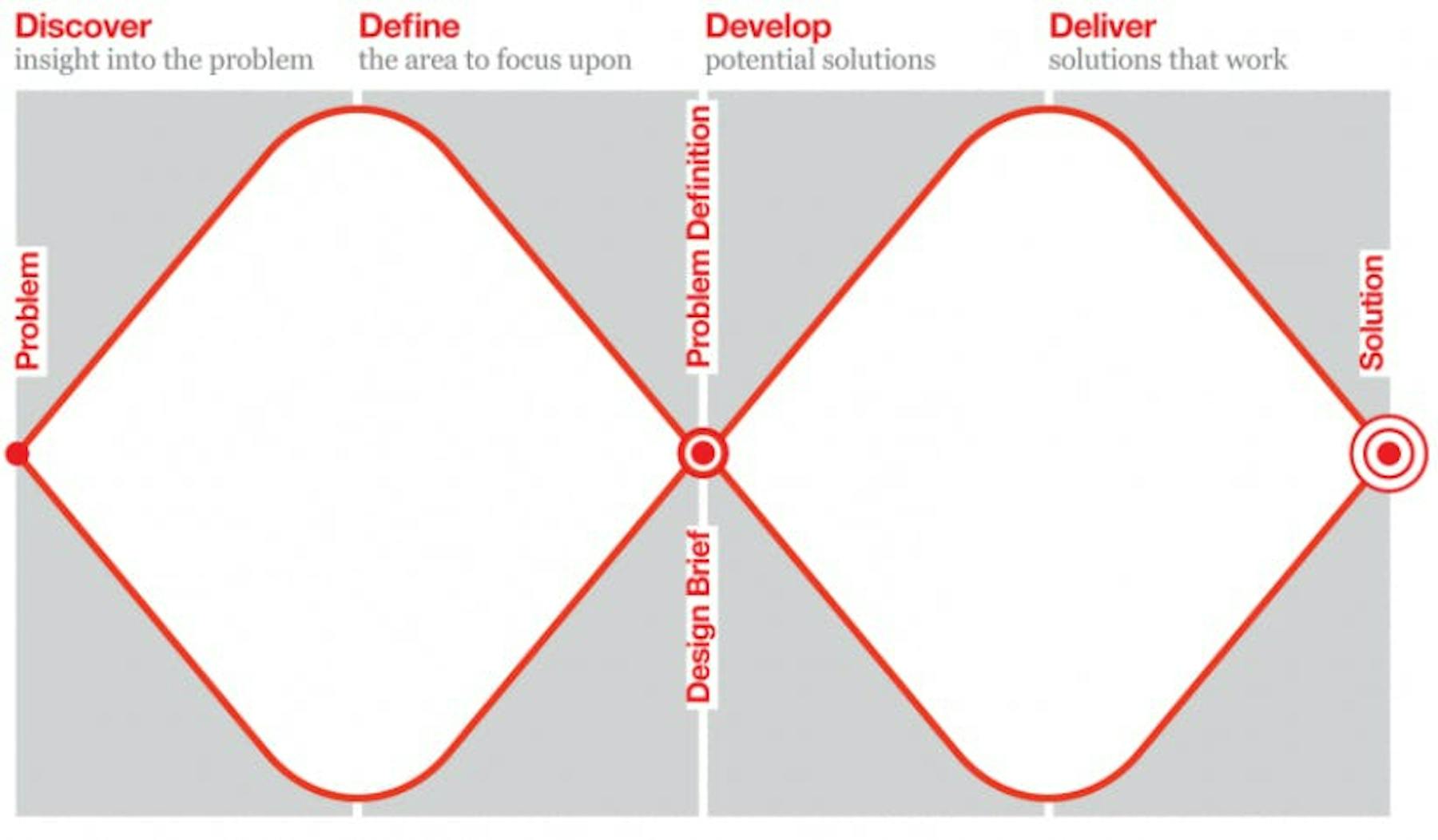
DD: from tactical process to strategic map
Many designers may recognize the following scenario: The Product team decide what needs to be built, as well as who it’s for and what it needs to do (Definition) and the Tech team do the coding, QA’ing, bug testing and A/B testing (Execution). It can be very easy to see these teams (or diamonds) as two separate things, but where does the design team fit in? They get excluded and are outside the process. The result is poor communication and products that get released with no testing at all.
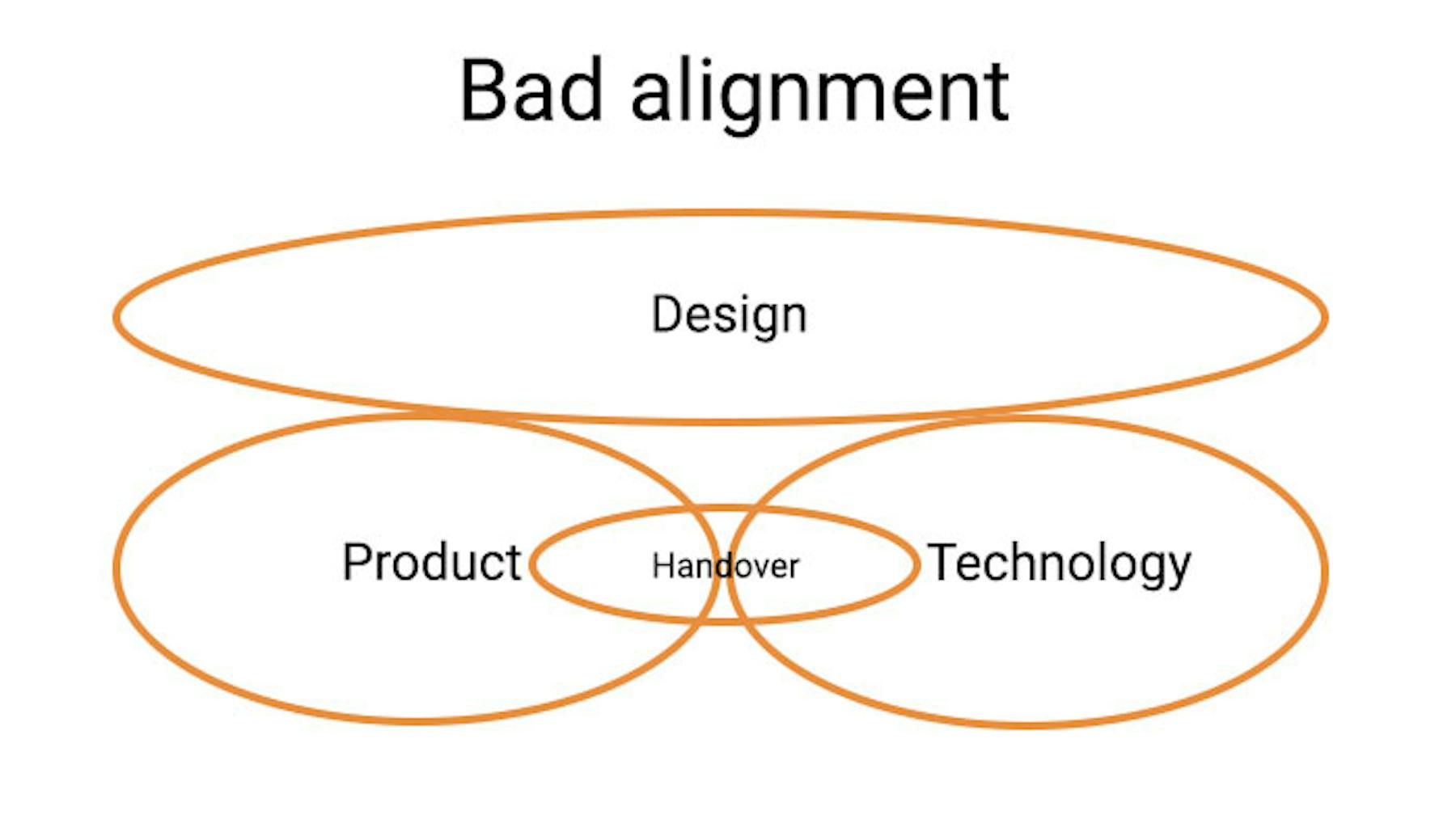
You need to align Design, Product and Technology in order to build great products and reduce wasted development time. There are many ways to do this and the DD can be used as a strategic map to get everyone on the same page.
The DD is a visual representation—its simplicity is powerful for communicating to a wide group, especially when the implementation may be far more complex.
If you are trying to make a change, you have a large mixture of decision making coming from commercial, technology and insight. The Double Diamond is helpful in both definition or execution, so you can focus on the working relationships needed to make this happen.
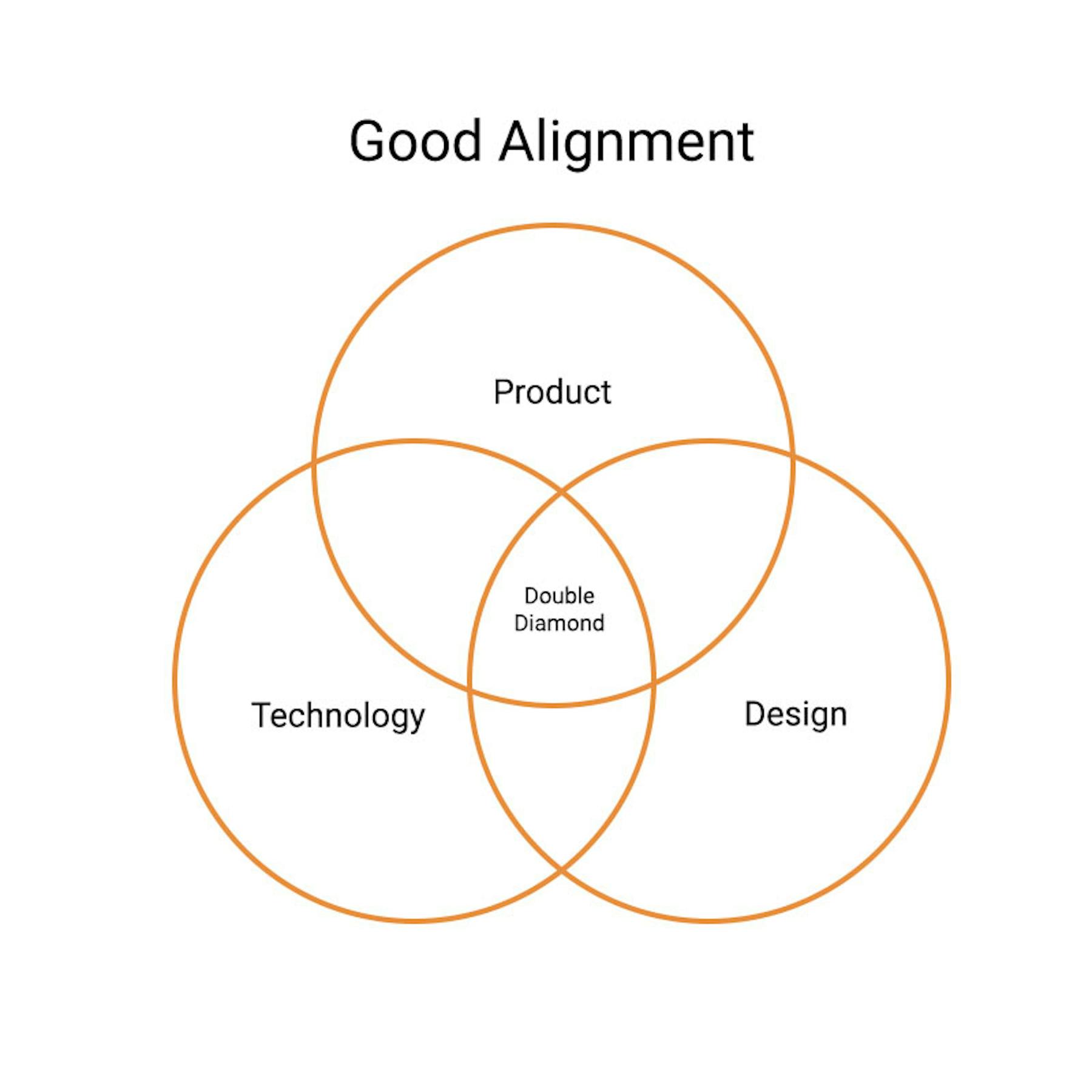
Where does DD fit vs. other methods?
UX teams spend most of their time (70%) on execution and only (30%) of time on definition but this 30% is huge as it de-risks all the effort and time spent on execution. Executing on the wrong product is the biggest sunk cost in enterprise software development.
The DD model has its flaws, all methods do, but it is useful as a strategic map. We need to be careful not to read too strictly in to it, otherwise it looks like waterfall and it is not Waterfall (Waterfall is a rigid, linear sequential design process that does not allow much change. Many businesses now favor a mix between waterfall and agile). Great agile teams know they need good discovery and definition before building rather than throwing stuff at a wall and seeing what sticks.
Double Diamond is not replacing agile, it’s a different lens.
Create a reliable toolkit of theories and tools, selecting the appropriate one as needed. Unlike Scrum, the Double Diamond is a strategic framework that integrates with tactical tools. For instance, the "Definition" phase involves user research, prototyping, and specific processes, while the "Execution" phase utilizes usability testing, A/B testing, and various optimization methods. These examples illustrate how tactical tools and processes align with the Double Diamond framework.
Radical Collaboration
When each team is on the same map, talking the same language. Collaboration is made much easier. The Double Diamond communicates a vision to senior executives. It enables self awareness for where discovery and definition work is lacking.
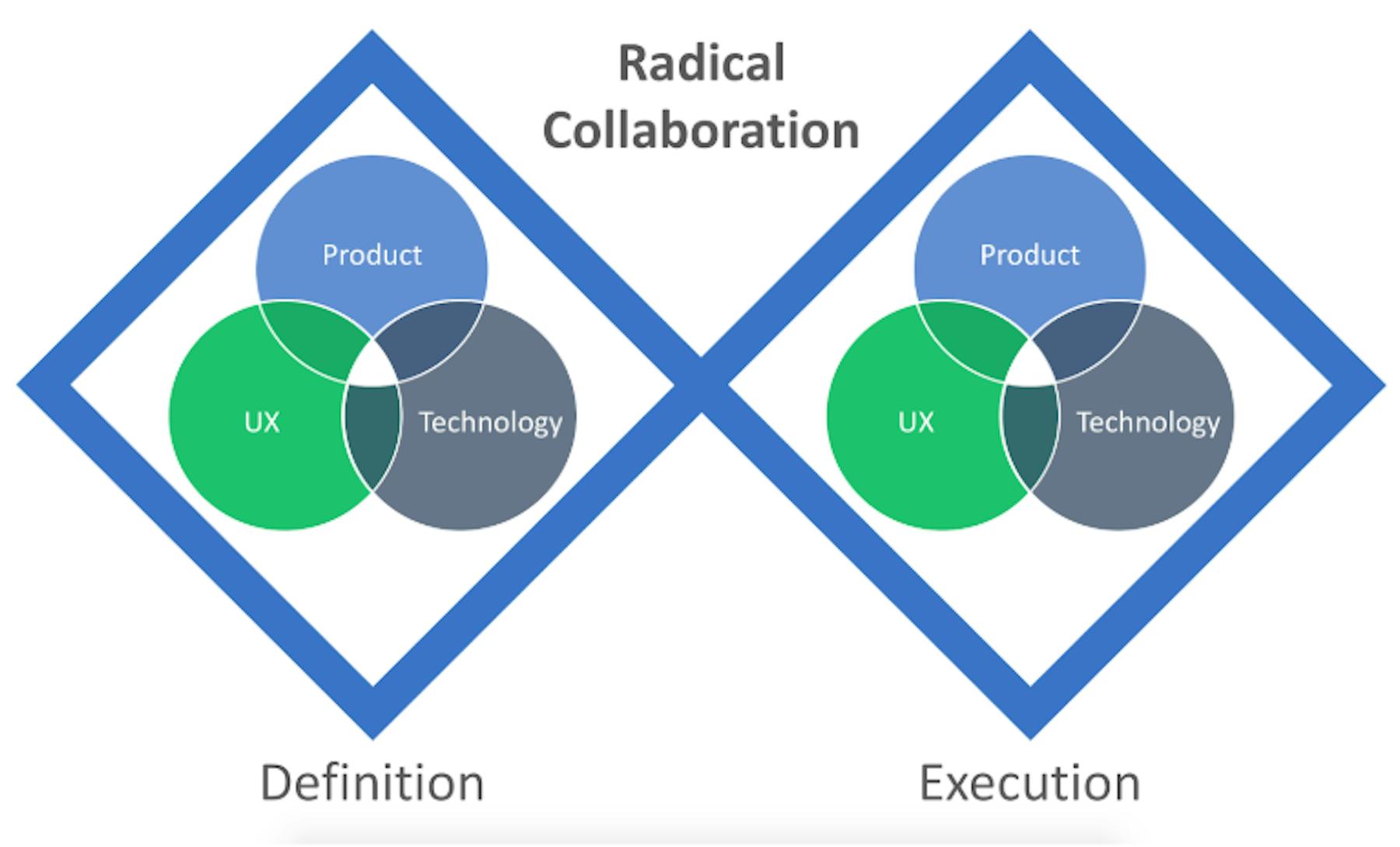
The DD has given designers and product managers a map to understand where their problems are so they know what to do next and what tools are available. Fundamentally it’s raised the profile of UX by showing Product and Tech where Design can help them in most scenarios.
Here are a few tips:
- Don’t give up or get disheartened if you need to present the same thing many times – new people join all the time.
- Find your senior sponsor who gets the potential and importance of design and get them on your side. Use the DD to help you do this.
And how does UserTesting fit in to all this? UserTesting is a tool to be used within the Double Diamond at each stage where appropriate. It’s one of the things used in the definition and in the execution spaces. It’s an all in one UX testing platform that makes testing and collaboration easy.
